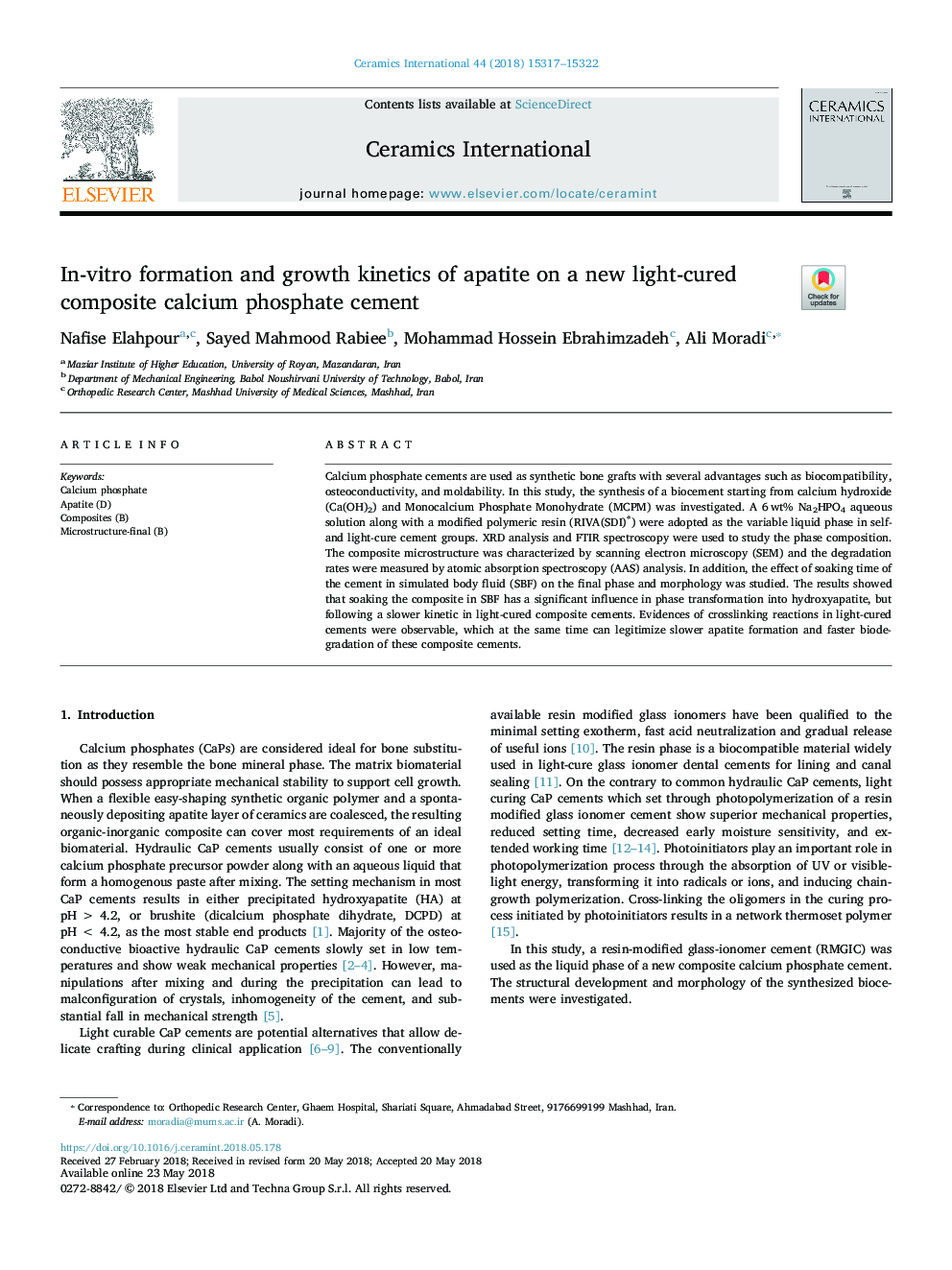| Article ID | Journal | Published Year | Pages | File Type |
|---|---|---|---|---|
| 7886219 | Ceramics International | 2018 | 6 Pages |
Abstract
Calcium phosphate cements are used as synthetic bone grafts with several advantages such as biocompatibility, osteoconductivity, and moldability. In this study, the synthesis of a biocement starting from calcium hydroxide (Ca(OH)2) and Monocalcium Phosphate Monohydrate (MCPM) was investigated. A 6â¯wt% Na2HPO4 aqueous solution along with a modified polymeric resin (RIVA(SDI)®) were adopted as the variable liquid phase in self- and light-cure cement groups. XRD analysis and FTIR spectroscopy were used to study the phase composition. The composite microstructure was characterized by scanning electron microscopy (SEM) and the degradation rates were measured by atomic absorption spectroscopy (AAS) analysis. In addition, the effect of soaking time of the cement in simulated body fluid (SBF) on the final phase and morphology was studied. The results showed that soaking the composite in SBF has a significant influence in phase transformation into hydroxyapatite, but following a slower kinetic in light-cured composite cements. Evidences of crosslinking reactions in light-cured cements were observable, which at the same time can legitimize slower apatite formation and faster biodegradation of these composite cements.
Keywords
Related Topics
Physical Sciences and Engineering
Materials Science
Ceramics and Composites
Authors
Nafise Elahpour, Sayed Mahmood Rabiee, Mohammad Hossein Ebrahimzadeh, Ali Moradi,
